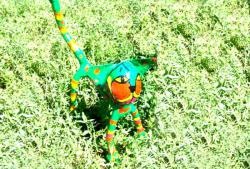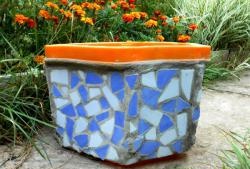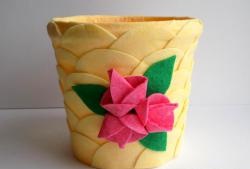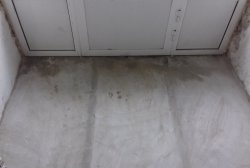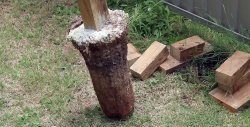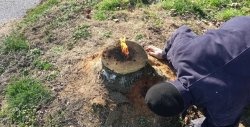
Before starting work, remember that working with gypsum cement mortar and alkyd paints requires wearing rubber gloves in a well-ventilated area or outdoors. It is advisable to cover the working surface with paper or polyethylene. Take a plastic container and fill it with sand and wrap it with wire. This is done so that during operation the container does not deform under the weight of the solution. If a container made of hard plastic, wood or metal is used, this item can be omitted.
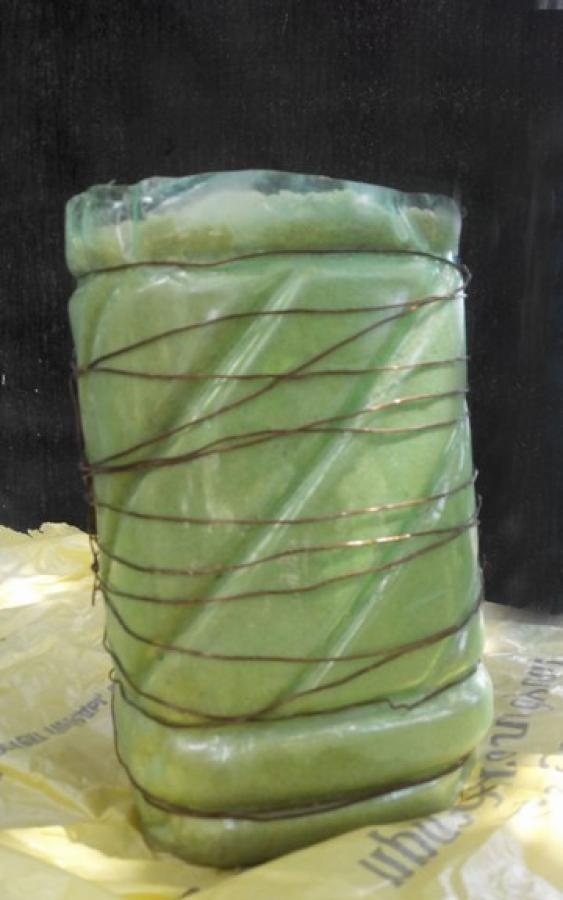
Let's prepare the solution. To do this, take equal parts of cement and sifted sand. Mix them in a separate container. After stirring the mixture, add clean water in parts. After thorough mixing, you should get a thick, homogeneous solution. Put the mute cement mortar into a separate small container and add building plaster to it. Since alabaster hardens quickly, immediately apply the solution to the moistened pots.After the solution has hardened, wrap the workpiece with construction mesh and apply a second layer of asbestos cement. Using a damp palm, iron the workpiece, thereby leveling the surface.
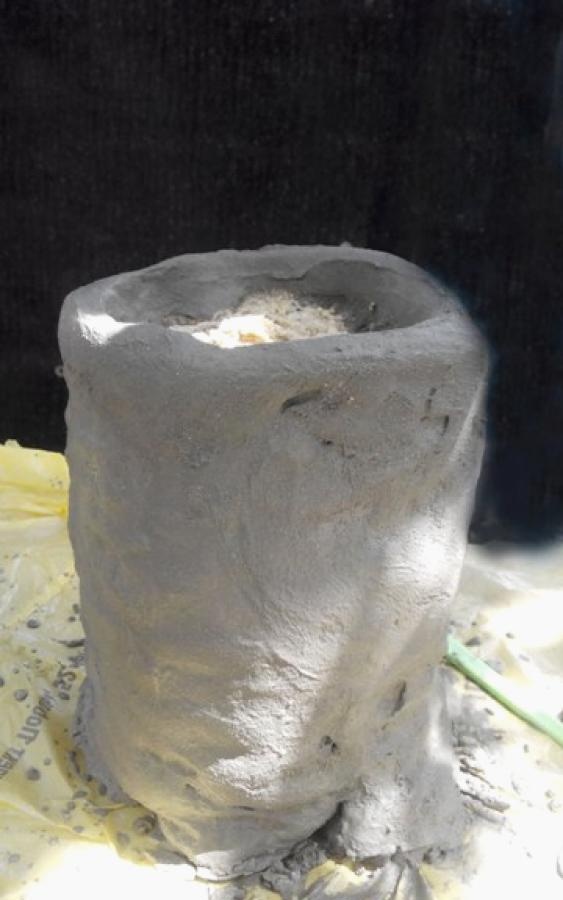
At the next stage we will form decorative elements. To do this, we will use the same solution with the addition of more building gypsum. Brows. Take a small amount of gypsum cement and with wet hands form a sausage. Divide it into two parts and attach it to the moistened workpiece.
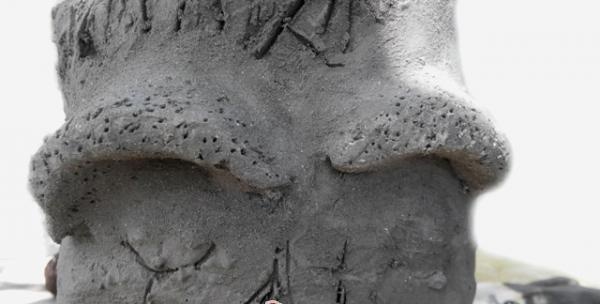
When applying relief elements, there is no need to use adhesives - just moisten the main surface and the part to be glued. Eyes. Take a little mass, divide it into two parts and roll into balls. Let's attach them to the desired shape.

We will make the eyelids from sausages and draw them with a stack or a knife.

In order to hide the joints between the parts, smooth them with a damp hand. If the solution has dried by then, then you can take a little cement, dilute it with water and apply it with a brush to the joints or fill the cracks. Nose. This detail must be done by extension. First, the base of the nose (the widest part) is formed, then the remaining elements are built up - the tip of the nose and nostrils. We'll make the stump's mouth out of two sausages. To form the bark, take a little asbestos cement into your palm (the solution should be thick and not spread over the surface) and throw it on the pots from top to bottom. Use your fingers to make frequent indentations.
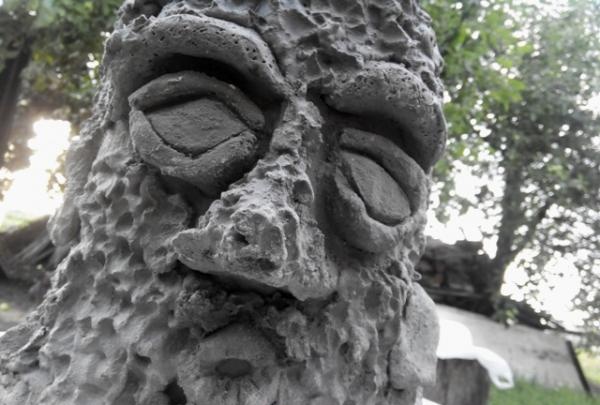
Let's make mushrooms on the side. To do this, we will form sausages and attach them to the pots. These will be the mushroom stems. We will make the hats from balls, flattened between the palms.
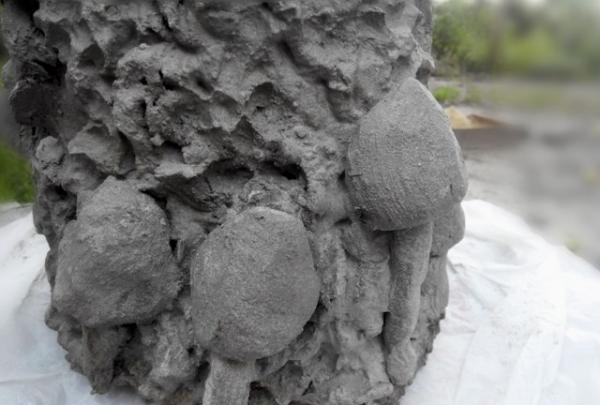
Leave the pot until the solution has completely hardened. Before painting, use a brush with stiff bristles or a brush to remove dust and particles of the solution from the workpiece. Afterwards we prime the surface.To do this, you can use acrylic primer or alkyd enamel diluted in white spirit. Let's cover the pots with a thin layer of ivory-colored alkyd enamel.
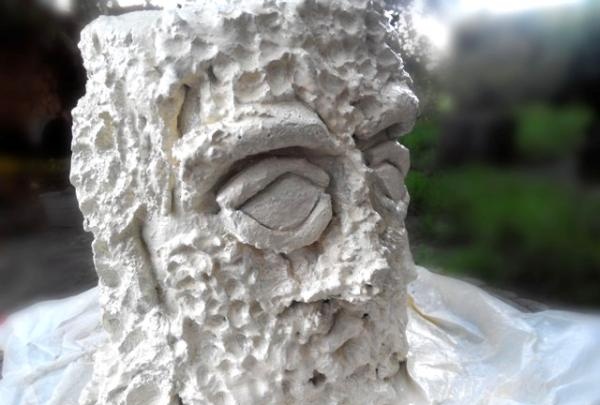
To do this, add a little yellow paint to the white paint and mix well. After the paint has dried, apply a little orange paint to a dry sponge and cover the surface with blotting movements.
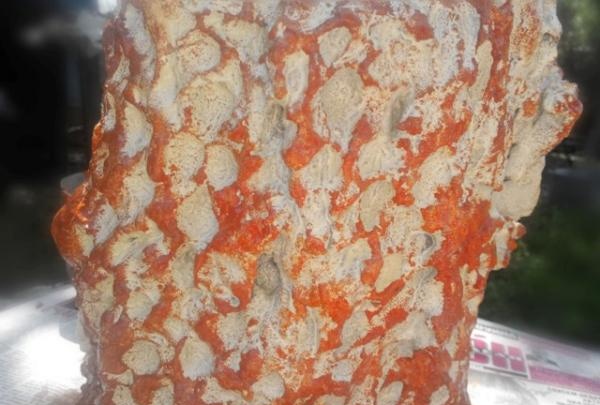
Afterwards, also using a sponge, paint the pots with brown paint. Using a thin brush, draw the eyes, shade the nose, eyebrows and mouth.

We will paint the stems of the mushrooms with beige paint, and their caps with red paint. Then add white dots to the caps and draw green grass.
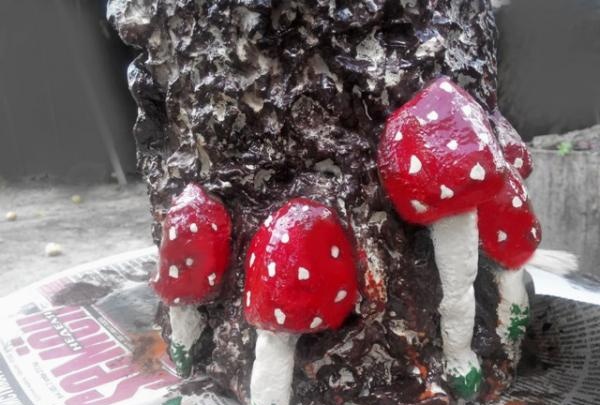
Finally, apply yellow paint with a sponge. If acrylic paint rather than alkyd is used, then it is recommended to cover the flower pots with several layers of varnish. Before planting plants in pots, make holes in the bottom of the plastic container, then lay drainage (pebbles or crushed stone), sand, and then soil mixture. The garden planter in the shape of a fairy stump is ready.
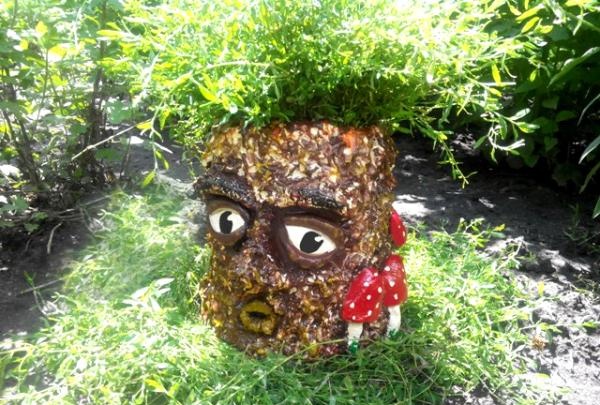
.
